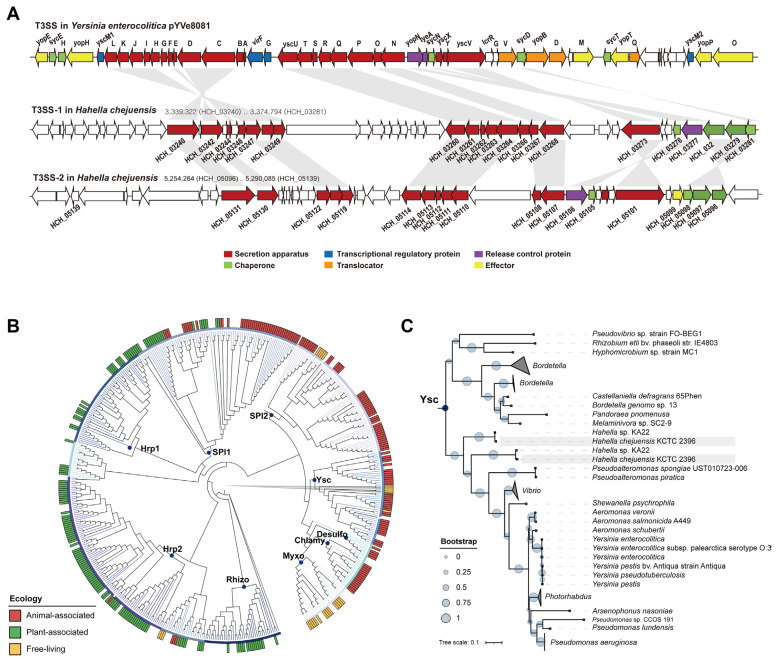Fig. 1.
Type III secretion systems (T3SSs) in the Hahella chejuensis genome and the phylogeny of SctV. (A) Genetic organization of two T3SSs in the H. chejuensis genome with the archetypal T3SS of Yersinia enterocolitica. (B) A topological representation of a prokaryotic type III secretion inner membrane channel protein, SctV. The tree was built using the maximum likelihood method based on 509 protein sequences in 381 conserved amino acid positions. The outmost circle’s color code represents the bacterium’s ecological features, and the inner circle was colored according to the clade information. The branches for H. chejuensis HctVs are shaded in grey. “Chlamy” strands for the clade that includes Chlamydia SctVs; “Desulfo”, Desulfovibrionales, “Hrp1”, Pseudomonas syringae; “Hrp2”, Ralstonia solanacearum; “Myxo”, Myxococcales; “Rhizo”, Rhizobium; “SPI1”, Salmonella enterica Pathogenicity Island 1 and Shigella; SPI2, S. enterica Pathogenicity Island 2; Ysc, Yersinia. Nomenclature for taxonomic clades follows those of (Abby and Rocha, 2012). (C) Detailed maximum likelihood tree of the “Ysc” clade in (B).

